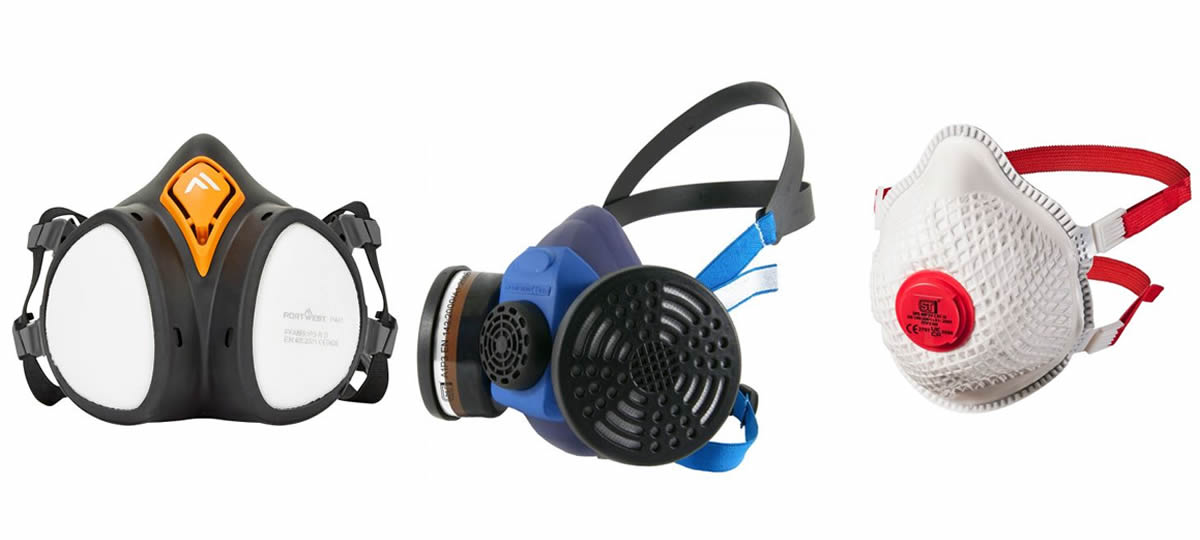
09 June 2025 | Workline Safety Ltd
Understanding Dust Masks
From construction and carpentry to agriculture and pharmaceuticals, exposure to airborne particles and dust poses significant health risks. Protecting your respiratory system is crucial, but not all dust masks are created equal. Choosing the right type for the specific task and hazard is essential for effective protection.
There are so many different categories and classifications of dust masks, that it can be overwhelming understanding why you should choose one over another, so we’ve provided a brief overview of the key differences to help you make the best choices.
Levels of Protection with Disposable Masks
Disposable and semi-disposable respirators are the most common type of dust mask in PPE and are designed to filter out airborne particles as you inhale. They are classified based on their filtration efficiency against different sizes and types of particles. The European standard EN 149 categorises FFPs into three classes:
FFP1: These masks offer the lowest level of protection, filtering out at least 80% of airborne particles. They are suitable for low levels of dust and non-toxic particles, so are great for basic DIY tasks like sweeping or light sanding.
FFP2: Offering a medium level of protection, FFP2 masks filter out at least 94% of airborne particles and provide protection against moderately hazardous dusts, mists, and fumes, such as those encountered when working with plaster, cement, or wood dust at higher concentrations. FFP2 is the minimum protection against COVID recommended by the WHO.
FFP3: These masks provide the highest level of protection among disposable respirators, filtering out at least 99% of airborne particles. They are essential when working with fine and very toxic dusts, fumes, mists, and airborne biological agents. This includes tasks involving asbestos, lead, or certain types of welding. FFP3 protection is mandatory on most construction sites in the UK.
Reusable Half and Full-Face Respirators
For more demanding tasks or prolonged exposure to hazardous substances, reusable half and full-face respirators offer a more robust and often more cost-effective long-term solution. These respirators feature a facepiece made of durable materials like silicone or rubber and utilise replaceable filters or cartridges. They are available in full-face and half-face styles, which we’ll cover in next month’s article.
Specialised Dust Masks and Respirators:
Beyond the main categories, several specialised options cater to specific needs including valved masks, powered air-purifying respirators (PAPRs), and Supplied-Air Respirators (SARs).
Valved Masks: Some disposable and reusable masks feature an exhalation valve. This valve allows exhaled air to escape more easily, reducing heat and moisture build-up inside the mask, improving comfort, and making breathing easier, especially during strenuous work.
Powered Air-Purifying Respirators (PAPRs): PAPRs use a battery-powered blower to draw air through filters and deliver purified air to the wearer via a hood, helmet, or tight-fitting facepiece. They offer a higher level of protection and increased comfort.
Supplied-Air Respirators (SARs): These respirators provide clean breathing air from an independent source, such as a compressor. They are essential in oxygen-deficient atmospheres or when dealing with extremely hazardous substances where filtration alone is insufficient.
Choosing the Right Mask
Here are some of the factors to consider when choosing a mask:
The Hazard: Identify the type and concentration of dust, fumes, or other airborne particles present. Consult safety data sheets (SDS) and risk assessments for guidance.
The Task: The nature and duration of the work will influence the level of protection and comfort required.
Fit: A proper fit is essential for any dust mask to be effective. The mask should seal tightly against your face, preventing unfiltered air from entering. Fit testing is recommended, especially for reusable respirators.
Comfort: For prolonged use, comfort is important to ensure the mask is worn consistently. Consider factors like weight, breathability, and the presence of a valve.
Regulatory Standards: Ensure the chosen mask meets the relevant safety standards and certifications (e.g., EN 149 for disposable masks)
Dust masks are a vital piece of personal protective equipment, offering protection against a range of respiratory hazards. Always prioritise proper selection, fit, and maintenance to ensure your chosen mask provides the intended level of protection, allowing you to breathe easy and work safely. Remember to consult with safety professionals and refer to relevant regulations for specific guidance on respiratory protection in your industry.